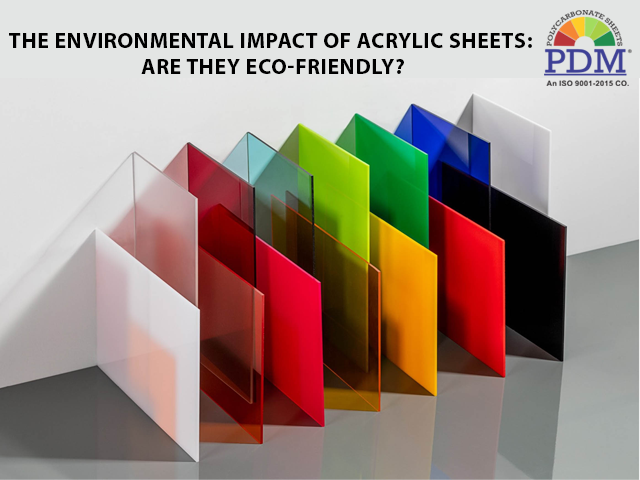Introduction:
In today’s world, where sustainability is at the forefront of many discussions, it’s essential to evaluate the environmental impact of the materials we use. Acrylic sheets, known for their versatility and durability, have become increasingly popular in various industries. But the question remains
Understanding Acrylic Sheets:
Before we assess their environmental impact, let’s first understand what acrylic sheets are. Acrylic, also known as polymethyl methacrylate (PMMA), is a synthetic polymer created from petroleum-based chemicals. It’s commonly used as a lightweight and shatter-resistant alternative to glass in applications ranging from signage and displays to furniture and construction.
Pros and Cons:
Acrylic sheets offer several advantages that contribute to their popularity. They are highly transparent, UV-resistant, and can be easily molded into various shapes and sizes. Additionally, acrylic has excellent weatherability and maintains its clarity over time. However, it’s crucial to acknowledge the potential environmental drawbacks associated with acrylic production and disposal.
Environmental Impact Assessment:
Raw Material Extraction:
Acrylic production begins with the extraction of petroleum, a non-renewable resource. The extraction process involves significant energy consumption and can lead to habitat destruction and pollution if not managed responsibly.
Manufacturing Process:
The manufacturing of acrylic sheets involves energy-intensive processes such as polymerization and extrusion. While advancements in technology have led to improvements in energy efficiency, the overall environmental footprint of acrylic manufacturing remains a concern.
End-of-Life Management:
One of the primary challenges with acrylic sheets is their disposal. Unlike glass, which can be recycled indefinitely, acrylic recycling is limited due to contamination issues and the complexity of separating acrylic from other plastics. As a result, a significant portion of acrylic waste ends up in landfills, where it can take hundreds of years to decompose.
Sustainability Initiatives:
Despite these challenges, the acrylic industry has been making efforts to improve its environmental performance. Some manufacturers are investing in renewable energy sources, reducing greenhouse gas emissions, and exploring alternative raw materials derived from bio-based sources. Additionally, advancements in recycling technologies may offer solutions to improve the circularity of acrylic materials.
Conclusion:
In conclusion, while acrylic sheets offer several benefits in terms of performance and versatility, their environmental impact cannot be ignored. As consumers and businesses, it’s essential to weigh the pros and cons of using acrylic and explore sustainable alternatives where possible. By promoting responsible manufacturing practices, investing in recycling infrastructure, and embracing innovation, we can work towards minimizing the environmental footprint of acrylic sheets and creating a more sustainable future.



